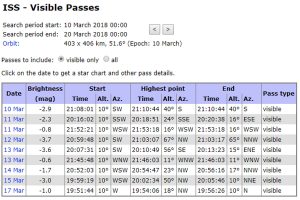(Posted 10 March 2018) China’s first space station, Tiangong-1 will be visible in Canberra’s early morning sky between 11 and 19 March 2018. This is likely to be your last opportunity to see the space station before it is destroyed as it re-enters the Earth’s atmosphere.
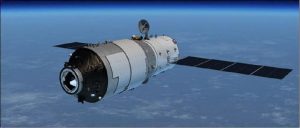
The space station is currently ‘out of control’ due to computer failures. This means that no one knows where it will re-enter the Earth’s atmosphere. Based on it’s orbital parameters, this could be between latitude 42.8 degrees South and 42.8 degrees North.
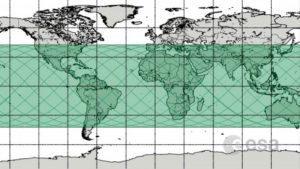
As of 10 March 2018, the European Space Agency estimate that the re-entry window ranges from 29 March through to 9 April. If we are lucky enough to see the re-entry occur over Canberra, it will look something like the European Space Agency’s ATV 1 re-entry.
The highly recommended website Heavens-Above.com site provides viewing time information and finder charts for anywhere on Earth.
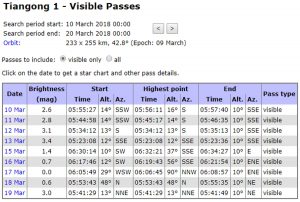
Unfortunately you will need to be an early riser to see Tiangong-1 (see above image for viewing times for Southern Canberra). You will be looking for a slowly moving moderately bright star. I highly recommend using the Heavens-Above.com site. This link will take you to a page for Southern Canberra which will give you updated viewing times and finder charts. If you are not in Canberra, go to this page for information on how to generate customised viewing information for your location using the Heavens-Above.com site.
On a happier note (because it isn’t currently doomed!) Canberra residents can also see the International Space Station pass overhead in the evening sky.
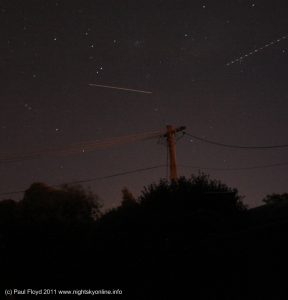
As per Tiangong 1, the International Space Station will look like a slowly moving star. However, the International Space Station is significantly larger meaning that it is dramatically brighter. On a good pass it can be almost as bright as dazzling Venus.
Go here to find visibility information for Canberra, for the International Space Station for the period 10 – 17 March 2018. Also click the above screenshot for a summary of that information. If you are in another location, go here on my site the quick links I have provided.
Good luck with your space station hunting.
